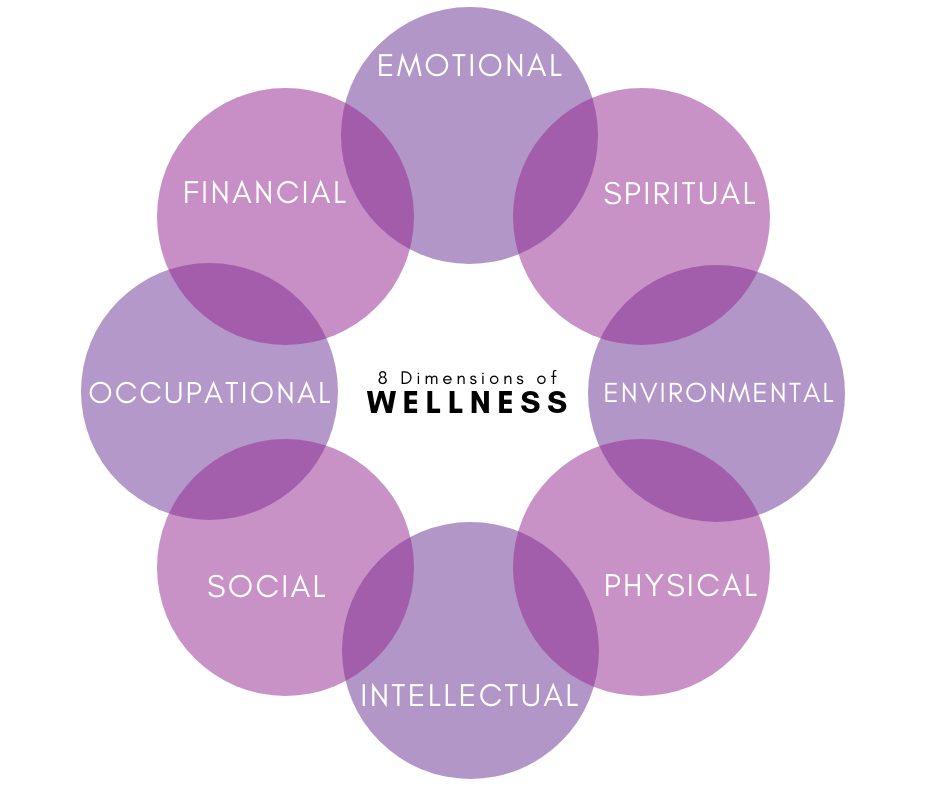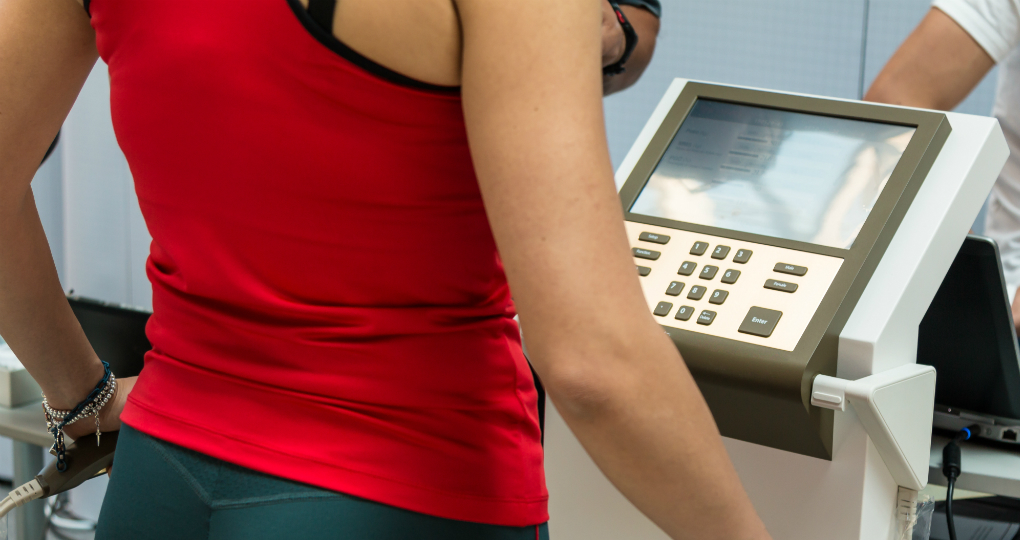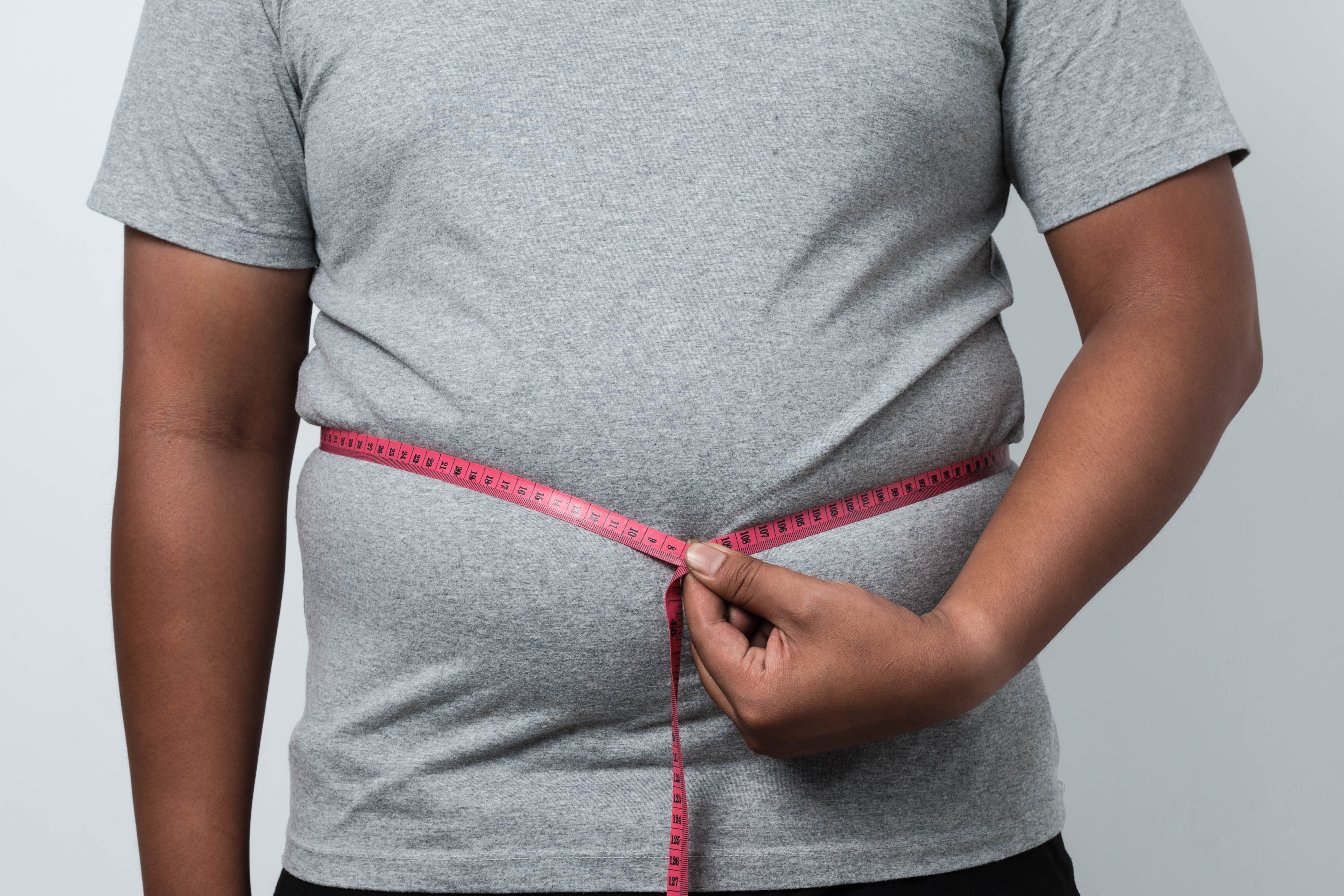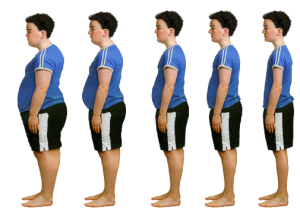
SAMHSA
Substance Abuse & Mental Health Services Administration (SAMHSA) has outlined eight dimensions of wellness to implement as part of daily life to help improve mental & physical health for people with mental and/or substance use disorders.


EMOTIONAL WELLNESS
This encompasses optimism, self-esteem, self-acceptance & the ability to experience and cope with feelings independently & interpersonally.
Emotional Wellness Includes
- Practicing Self-Care
- Fostering Inner Resources
- Fining Unique Ways of Coping with Stressors
- Being Realistic About Expectations & Time
SOCIAL WELLNESS
This focuses on connecting with your community & the people around you, which includes being aware of your own social and cultural backgrounds
Social Wellness Encourages
- Taking an Active Role in Your Community
- Connecting with Others
- Establishing Supportive Social Networks
- Developing Meaningful Relationships


INTELLECTUAL WELLNESS
Intellectual Wellness encourages participating in mentally stimulating & creative activities
This is the ability to:
- Think Critically
- Reason Objectively
- Make Responsible Decisions
- Explore New Ideas & Different Points of View
- Emphasizes Lifelong Learning & Inspires Curiosity
SPIRITUAL WELLNESS
Spiritual Wellness involves seeking & having a meaningful purpose in life, also to participate in activities that are consistent with one’s beliefs & values
A Spiritually Well Person:
- Seeks Harmony with the Universe
- Expresses Compassion Towards Others
- Practices Gratitude & Self Reflection


FINANCIAL WELLNESS
Inclusive of our relationship with money & skills to manage resources
Part of This Dimension Includes
- Living Within Our Means
- Making Informed Financial Decisions & Investments
- Learning to Prepare for Short-term & Long-term Needs or Emergencies
- Being Aware That Everyone’s Financial Values, Needs & Circumstances are Unique
OCCUPATIONAL WELLNESS
This involves preparing for & participating in work that provides personal satisfaction & life enrichment that is consistent with your values, goals and lifestyle
This Dimension Includes:
- Taking a Thoughtful & Proactive Approach to Career Planning
- Assessing Personal Satisfaction in One’s Work


PHYSICAL WELLNESS
Physical Wellness is not merely the absence of illness, but about maintaining a thriving lifestyle
This Area of wellness includes adopting healthy habits such as:
- Routine Medical Exams
- Immunizations
- Safety Precautions
- Sexually Transmitted Infection Screenings
- Adequate Sleep
- Avoiding Risky Behaviors (Alcohol, Tobacco & other Substances)
RESTING METABOLIC RATE (RMR)
Learn how your Resting Metabolic Rate (RMR) is important to your wellness journey


RESTING METALBOLISM
This is your resting metabolic rate (the speed of your metabolism). A higher number means your metabolism is faster, burning more calories each day. A lower number means your metabolism is slower, burning fewer calories. Your metabolism is 100% unique to you. To lose, gain, or maintain weight, measuring your resting metabolism is the first step.
WEIGHT, ACTIVITY, DIET
Weight can fluctuate at different times of your life, and day-by-day, the numbers on the scale can be discouraging. Instead, track your weight, activity, and diet over time. Seeing your long-term progress helps you reach your goals. It’s the journey that matters.


METABOLIC HISTORY
Metabolism changes. When you exercise to build muscle, your resting metabolism can rise. When you lose muscle from dieting or as you age, your resting metabolism can drop. What’s important is that you know. Make sure your metabolism is on track with your weight, activity, and dieting goals. Knowledge is power.
REQUENTLY ASKED QUESTIONS
Your metabolism is based on a number of factors. The major ones are:
- Body size – Those with larger frames tend to have higher metabolisms.
- Body composition – Individuals with greater muscle mass burn more calories, even at rest.
- Age – Growing older, metabolism slows down.
- Sex – Men typically have a faster metabolism than women of the same age and weight.
- Health and medical conditions – Stress, medications, pregnancy, and hormonal disorders (such as hypothyroidism) can change metabolism.
- Genes – Born this way.
I know my metabolism, and I am eating fewer calories and exercising more. Why is my weight the same?
Your weight can stay the same even when your overall body composition is changing.
Your weight comes from both fat tissue and lean tissue. Lean tissue – which includes organs, bone, and muscle – weighs more than fat tissue. If you lose fat tissue, but gain muscle tissue, this contributes to your weight. However, gaining more muscle tends to raise metabolism, which can benefit long-term weight management.
Everyone’s metabolism is different. And even individual metabolism can change over time. Though ways to estimate your metabolism exist, they’re based on generic assumptions and don’t include the many “unknown” factors that make your metabolism unique to you. For that reason, metabolic estimates can be inaccurate.
Conventional wisdom says: The higher your metabolism, the more you can eat without gaining weight. And vice versa.
Here’s how it works.
When you eat, you take in calories. Your metabolism transforms these calories into your body’s fuel. What isn’t used is later stored as fat.
Weight loss occurs when you take in fewer calories than what you use. Weight gain occurs when you take in more. And your weight stays the same when the calories you take in are equal to what you burn.
The total number of calories you burn (your total energy expenditure) comes from your resting metabolism and your level of physical activity. In today’s world, resting metabolism makes up as much as 70-85% of total energy expenditure.
When you know your metabolism, you’ll know how many calories you’re really burning. Instead of following a “standard” 1500 or 2000 calorie meal plan, you’ll be able to fine-tune your diet to prec
